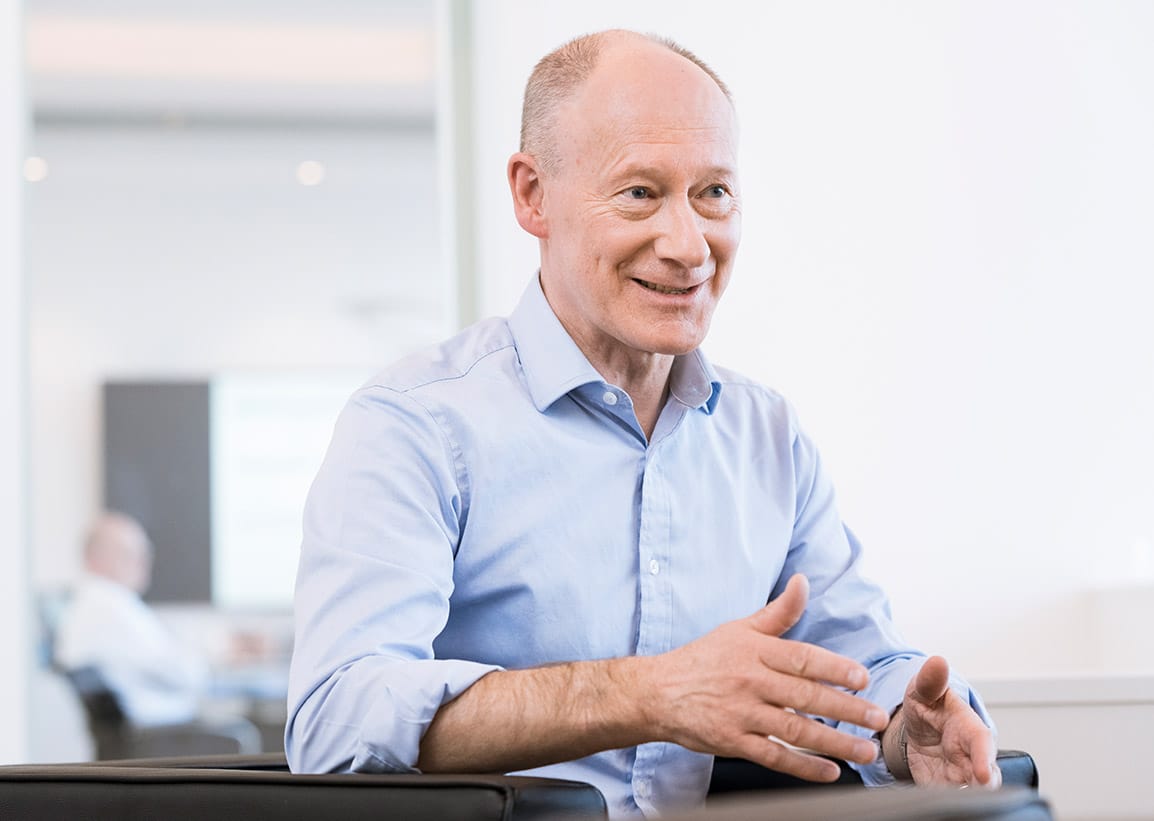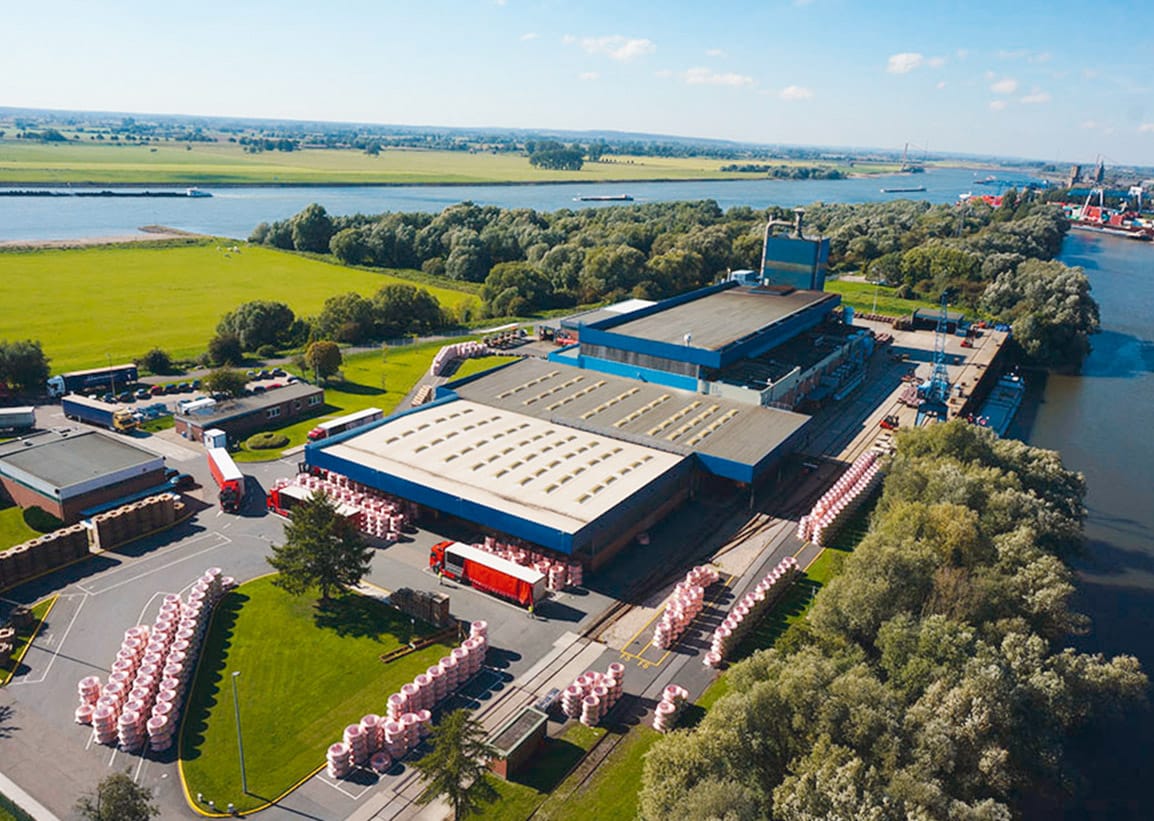External Growth Opportunities
The multi-metal approach
gives us options
At Aurubis, we have our sights set on further growth. Not only are we pursuing internal growth through our FCM project, we are also looking intensively at ways of further driving external growth. With sensible acquisitions, we want to reinforce our business model from the outside as well. A prime example is the acquisition of the 40 % share of Deutsche Giessdraht (Emmerich) previously held by Codelco Kupferhandel GmbH. This strengthens our market position and creates additional synergies.

Mr. Scotting, where do you see the most attractive growth opportunities for Aurubis?
William Scotting (WS): We are gradually developing from a copper producer into a multi-metal processor. This offers a variety of possibilities for internal and external growth alike. With our main metal, copper, we are already positioned in areas of future growth. For example, electric vehicles, digitalization, and urbanization are just three of the big trends from which we will benefit to an every greater extent as time goes on. Furthermore, increasingly complex raw materials should allow us to provide solutions to our business partners and extract more valuable elements in the future. This opens up new opportunities for us.
In what areas could growth through partnerships or acquisitions be considered?
WS: There are a number of opportunities along our flow sheet to add value in a sensible way. We see interesting options in multi-metal recycling in particular, especially given the rising interest in matters of sustainability. As the world’s largest recycler, we already have a great deal of internal expertise and a leading market position that we would like to expand.
What are your acquisition criteria?
WS: Aurubis has its roots in Hamburg, and we maintain a pragmatic, Hanseatic approach in M&A topics as well. As such, we want each of our acquisitions to create value, enhance our sustainability, and contribute to our multi-metal strategy. We should also understand the risks involved and how to mitigate these. Geopolitically, this means that we favor regions that are fundamentally politically stable. Aurubis thinks in the long term and therefore needs the security to be able to plan. A stable energy supply is highly relevant to us in this regard. Last but not least, there’s the question of logistics: We consider companies that could be easily integrated into our existing network of Group companies to be especially interesting.
Is Aurubis capable of integrating larger companies as well?
WS: I think that taking a look at our plant in Bulgaria clearly answers this question. Acquired in 2008, the smelter is now one of the most modern in Europe. Thanks to the latest capacity optimization, Pirdop now even has a higher concentrate throughput than the parent plant in Hamburg. At the same time, our Bulgarian plant is one of the most environmentally friendly in the world, and it fulfills our high efficiency requirements, making it a real M&A success story. It illustrates well that we can transfer our expertise and our skills within the Group, enabling organic growth. Together with additional acquisitions that we’ve made in the past, such as the recycling specialist Hüttenwerke Kayser in Lünen, our plants in Olen and Avellino, and the very recent acquisition of Deutsche Giessdraht, we have created a highly efficient and integrated setup in the Group.
So what transaction sizes are feasible?
WS: As a virtually debt-free company, we could incur debt up to three times our EBITDA, generally speaking, without violating any bank restrictions. This gives us a comfortable scope. However, we are more likely to make smaller to medium-sized acquisitions, as opposed to a large transaction. Whether this is successful or not depends on many factors, not least the appraisal of the object of purchase in question. Another very important factor for the success of an M&A transaction is that the parties involved are committed to forging reliable, long-term partnerships. And this is certainly true of Aurubis.
Will you be developing into more of a solution provider in the future?
WS: Absolutely. With FCM, we are already breaking new ground and clearly positioning ourselves as a preferred partner for our mine suppliers, recycling material suppliers, and industrial suppliers when it comes to complex input materials. There is still a lot more potential in these partnerships, especially when we’re talking about metallurgy and processing issues, areas where we can contribute our know-how. Incidentally, this also enhances the probability that financing materializes for a mine. When it comes to solutions on the recycling side, our partnerships to close the material cycle come to mind in particular. In this way, we enable valuable natural resources to be used over and over again. And that’s good for all of us in the end.
Full acquisition of Deutsche Giessdraht GmbH
In 2018, we acquired the remaining shares of Deutsche Giessdraht GmbH from Codelco Kupferhandel GmbH. The acquisition is part of our strategic reorientation and aligns with our intention to position our products in industries of the future. With this step, we are adjusting our rod capacity to our rising production of copper cathodes, the preliminary product for rod. Together with the other rod plants, we are also enhancing our delivery reliability. Our product dg-RheinRod™ is a rod brand that fulfills the highest standards of drawability and surface quality.

